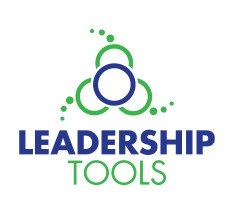Team-Assessment


Donna Rae Scheffert, author, consultant, and experienced with team-assessment is a retired Leadership Development Specialist from the University of Minnesota Extension. She spent over 20 years creating leadership information, tools and training. She is the owner of online-leadership-tools.com
How is my team doing now?
This team-assessment leadership tool is for teams to improve their productivity and interpersonal relationships by assessing the strengths and challenges of the group.
A survey has many benefits: it helps the team talk about what is going on and set goals, it is a 'neutral' way to identify issues without causing interpersonal conflict, and it can be used regularly to track progress.
An analysis tool like this that is used on a regular basis can be less threatening than one used when conflict is already occuring in the team. A member evaluation can also improve group participation.

When your group wishes to analyze its progress, have each member rate each element using the numbers behind it. The scale ranges from 1 (low) to 5 (high).
Scale
1 = Missing Completely
3 = Neither
5 = Operating Ideally
Team-Assessment
For a group profile, add each members response per item. Your greatest strengths are the largest total numbers and the lowest numbers indicate areas to consider improving upon.
These are the areas to be considered when you think about your team:
1. ACTIVE LISTENING
2. OPEN COMMUNICATION
3. MUTUAL TRUST & CONFIDENCE
4. ATTITUDES TOWARD DIFFERENCES WITHIN GROUP
5. MUTUAL SUPPORT
6. INVOLVEMENT-PARTICIPATION
7. CONTROL METHODS
8. FLEXIBILITY
9. USE OF MEMBERS RESOURCES
10. OBJECTIVES OR PURPOSE
1. ACTIVE LISTENING
Members don’t really listen to one another – they interrupt and don’t try to understand others. 1 2
Neither 3
Members really listen and try hard to understand each other.4 5
2. OPEN COMMUNICATION
Members are guarded or cautious in discussions. 1 2
Neither 3
Members express both thoughts and feelings openly. 4 5
3. MUTUAL TRUST & CONFIDENCE
Members evidence suspicion of one another’s motives. 1 2
Neither 3
Members do not fear ridicule or reprisal. 4 5
4. ATTITUDES TOWARD DIFFERENCES WITHIN GROUP
Members avoid arguments, smooth over differences, suppress or avoid conflicts. 1 2
Neither 3
Members search for, respect, and accept differences and work through them openly – they are not pressured to conform. 4 5
5. MUTUAL SUPPORT
Members are defensive about themselves and their functions. 1 2
Neither 3
Members are able to give and receive help. 4 5
6. INVOLVEMENT-PARTICIPATION
Discussion is dominated by a few members. 1 2
Neither 3
Members are involved, comfortable to participate in ways they choose. 4 5
7. CONTROL METHODS
The agenda and decisions are controlled primarily by the chairperson or facilitator. 1 2
Neither 3
Members accept responsibility for productive discussion and for decisions. 4 5
8. FLEXIBILITY
The group is locked in on established rules and members find it hard to change procedures. 1 2
Neither 3
Members readily change procedures in response to new ideas and situations. 4 5
9. USE OF MEMBERS RESOURCES
Individual’s knowledge, abilities, and experience are not utilized. 1 2
Neither 3
Each member’s knowledge, abilities, and experience are utilized. 4 5
10. OBJECTIVES OR PURPOSE
Objectives are not clearly understood and/or there is no commitment to them. 1 2
Neither 3
Objectives are clear, are understood, and there is full commitment to them. 4 5
Team-Assessment Summary
Please indicate if the area it is a Strength (S)averages 4-5, Neutral (N)averages 3 or a Challenge(C)averages 1-2
Use this analysis data to improve your group functions.
1. ACTIVE LISTENING
2. OPEN COMMUNICATION
3. MUTUAL TRUST & CONFIDENCE
4. ATTITUDES TOWARD DIFFERENCES WITHIN GROUP
5. MUTUAL SUPPORT
6. INVOLVEMENT-PARTICIPATION
7. CONTROL METHODS
8. FLEXIBILITY
9. USE OF MEMBERS RESOURCES
10. OBJECTIVES OR PURPOSE
Adapted from the Field Associate Guide to Rural Development, Northwest Regional Educational Laboratory.

Leadership Tools for Team-Assessment
For additional options for a team assessment
Trustworthy Source of Facilitation, Training, Strategic Planning
Experienced with Team-Assessment
Donna Rae Scheffert
809 Mayflower Ct.
Northfield, MN 55057
Let me assist you and your organization. Call me at 612.360.4484
